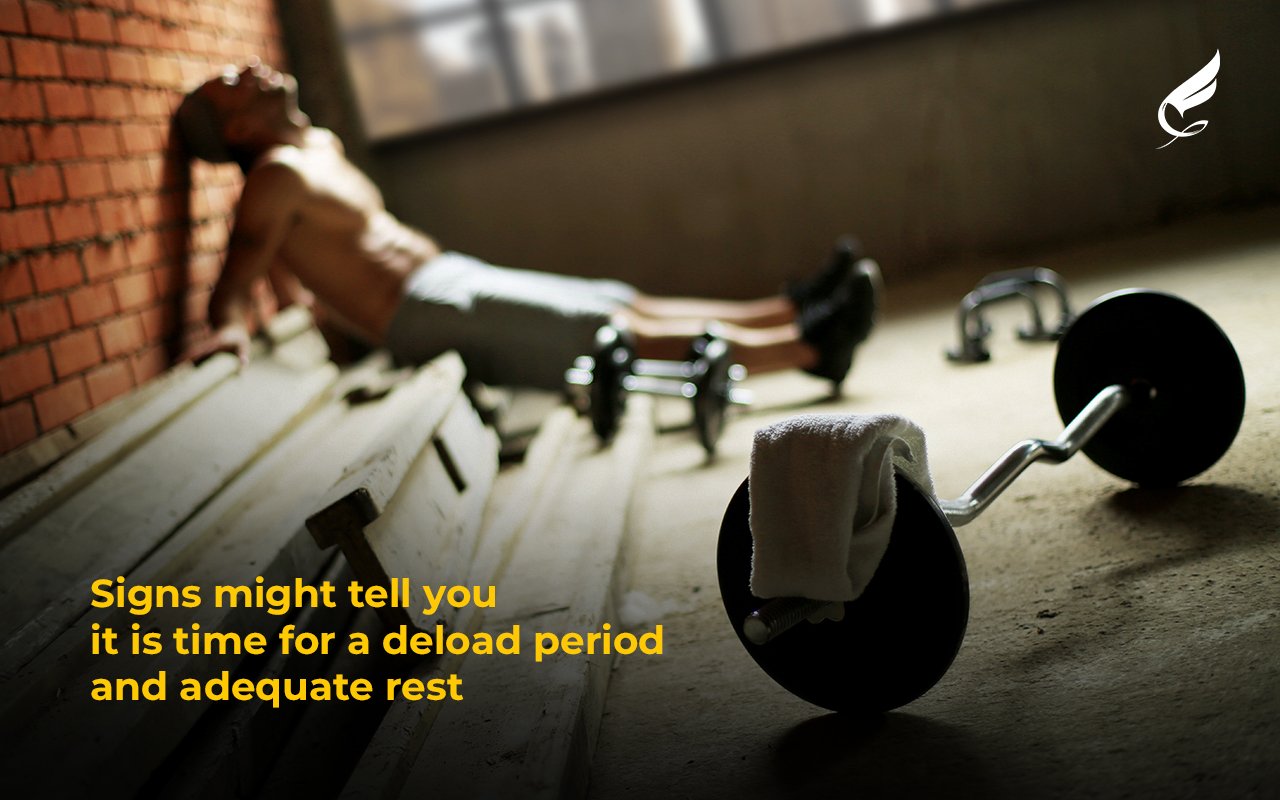What is a Deload in Lifting, When and How to Do it When Your Objective is Maximizing Strength Gains VS Maximizing Muscle Growth
Deloading is integral to any fitness routine, but it's often overlooked as people focus on the grind and push their bodies to the limit. Studies have shown that deloads in lifting can both help you improve performance and also can have a positive impact on lean muscle mass. Deloads can be a great way to recover from fatigue and prevent injury while allowing you to gain strength and muscle.
But what is a deload?
A deload can be defined as a period of reduced intensity and volume in your training program, usually lasting one to two weeks. During this time, you do not train with maximal effort but focus on lifting lighter weights than you used to lift during the peak week of your training cycle, or you introduce a variety of lighter exercises such as bodyweight workouts or light cardiovascular activities.
What is the benefit of incorporating regular deloads into your fitness routine?
The benefits of incorporating a deload into your training are many, and here I will list and explain a few of them:
Deloads can help you recover from fatigue and prevent injury: when you overwork your muscles long, they become tired and prone to injury. A deload allows the body to rest and recover from the intense workouts you put it through.
Deloads can improve performance: when you take a break from intense training sessions, your body has the chance to recover and recharge. That can result in higher performance during your next training cycle.
Dealoads can also help build lean muscle in the weeks and months to come via muscle desensitization, which means that your muscles will be able to get a growth stimulus from a lesser volume and intensity than during the peak week of your training.
During intense training, the central nervous system gets overloaded, especially in strength training programs, where a deload week comes in handy to give it some rest.
When should you do a deload when the goal is maximizing strength vs. maximizing lean muscle mass gains?
When your objective is to maximize strength gains, a deload should be done when your progress starts to plateau or slow down. That usually means that you have been training with heavy weights for an extended period, and it's time for your body to rest and recover to continue building strength when you start the next training cycle.
Here is a sample deload week for a powerlifter who is squatting 200kg, deadlifting 250kg, and bench pressing 150kg:
Monday: Squat - 50%-70% of 1RM (100-140kg)
Tuesday: Bench press - 50%-70% of 1RM (75-105kg) Deadlift - 50%-70% of 1RM (125-175kg)
Wednesday: Rest day
Thursday: Deadlift - 50%-70% of 1RM (125-175kg)
Friday: Accessory movements with lighter weights and higher reps
Important Note: Volume should not exceed 70% of the training volume in a peak week. If peak week had six sets of 4 reps, deload week should have three sets of 4-6 reps with 50-70% from 1 RM.
*RM = repetition max
When maximizing lean muscle mass is your goal, a deload week should be done every 6-10 weeks after completing an intense training block. That will give your body time to rest and recover, allowing it to adapt and build more lean muscle mass in the following weeks or months.
The training volume should be 50-60% from the peak week, and the weights carried should not exceed 70% of the maximum weight you carried in a peak week.
Signs might tell you it is time for a deload period and adequate rest
Poor physical performance
If you noticed difficulty lifting the weights you did the previous week or two, that could be a clear sign that it is time for a deload week. Also, if you are stuck on the same weight for an extended period, that could be a sign that you must deload properly before training to overcome your plateau.
Disturbed sleep
Reduced deep sleep, inability to sleep more than 6 hours per night, frequent waking up, and urination could indicate central nervous system fatigue. That usually means a deload is needed for your body to rest and recover adequately.
Loss of appetite
Loss of appetite could be one of the most evident signs of overtraining. Pay attention to your appetite, and if these symptoms persist, especially around the fourth week of training, you should perform your deload week at an earlier stage than 6-8 weeks.
Other symptoms of overtraining could also include:
increased moodiness
joint pain
loss of motivation
Listen to your body and understand that building strength and improving your physique is not a sprint, and one week's pause from intense weightlifting might be the best thing you could do for your future results!
Common questions and answers
Does a deload week mean one week?
Deloads can be anywhere from 5 days up to 2 weeks. The duration of your deload depends on the intensity and volume of your previous training cycle and how much rest you need for your body to recover adequately.
What happens to the central nervous system when we lift heavy?
When lifting heavy weights, the central nervous system is put under intense strain because it is responsible for coordinating the motor neurons, which control muscle contractions. This strain can cause the body to become fatigued and lead to decreased performance, poor form, and injury if left unchecked. A deload week allows the central nervous system to rest and recover and perform optimally when you start your next training cycle.
Will I lose muscle if I deviate from my regular training and reduce volume and intensity?
Whether you are a beginner, an intermediate, or an advanced lifter, one week with reduced volume and intensity will only affect your gains if you don't consume sufficient protein and move your muscles at all. If you want a bulletproof way of ensuring you do not lose a single gram of muscle tissue, do 4-6 working sets for each of the big muscle groups at 70% of the volume and intensity of your peak week; make sure you are at maintenance calories and that you consume between 1.8-2gm of protein per kg of your bodyweight.
If you are someone who needs support on their fitness journey, needs help planning a deload week, or simply needs help learning the correct form when it comes to lifting weights and curating a optimal workout routine, check out our services:
To learn more about all things training and nutrition, check out some of our science-based blogs:
#Stay Strong
#BeFortius





